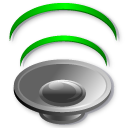"In 1980 most of us felt pretty certain that users --customers-- were going to demand the application portability that UNIX promised, and CFOs and CEOs were going to demand the hardware independence that UNIX (in theory) made possible.
But in 1988, the PC revolution had resulted in DOS and PCs stealing the opportunity that we had seen for UNIX, causing us to conclude that Microsoft would continue its domination simply because there was no alternative -- despite the obvious need for a better PC operating system than DOS.
Today I am not sure of the inevitability of Microsoft's continuing dominance on the PC platform, which begs the question: What sort of operating system could challenge those from Microsoft ?
It would have to be cheap and at the same time respected by technical users. It would also have to be compatible with one of the major operating systems standards. It would have to improve faster than its competitors, have true multiuser, multitasking capabilities, and have to come from a vendor with resources to develop the product for a worldwide market and roll out new features on massive, coordinated basis simultaneously.
That's where Linux comes in.
Linux is a 32-bit, multiuser, multitasking operating system that is as stable as, if not more than, any form on UNIX on the PC. The kernel is largely the work of Linux Torvalds, who is now employed by the University of Helsinki, although much of the original work was done while he was a student there. After writing a prototype kernel in 1991, Torvalds posted it to the Internet (in the comp.os.minix newsgroup) and invited the world to help him work on it.
A Propeller Head's Dream
Rob Kolstad, president of Berkeley Software Design, of Colorado Springs, CO, sees Linux as more theology than technology. "Linux users," he says, "do not argue the merits of their chosen technology, they evangelize on the method that was used to create it."
To begin to understand the evangelical aspect of Linux, consider the development cycle at any commercial operating system vendor. The marketing department meets with its largest customers' senior MIS managers (most og whom have not written code in 20 years) to find out what these customers are asking for.
They write reports, conduct surveys, and eventually come up with a list of, say, the 10 most important new features that their operating system developers should work on.
In Linux there are no marketing teams. Developers are the customers. They work on the parts of the code, utilities, or applications they have an interest inusing.
The code these developers build is posted on the net for others to download, test, and if appropriate, provide suggested changes, report bugs, or use for whatever purpose they chose. Coordination of all this development effort is casual but effective. There is a designated person responsible for each major aspect of the Linux operating system, Torvald's leadership of the kernel being a famous example.
[...]
This was published by Robert F. Young in Uniforum Monthly in October 1994.
Can you spot some coincidences with today's ecosystem ?
13 years have passed and are we still arguing about the same things ?









